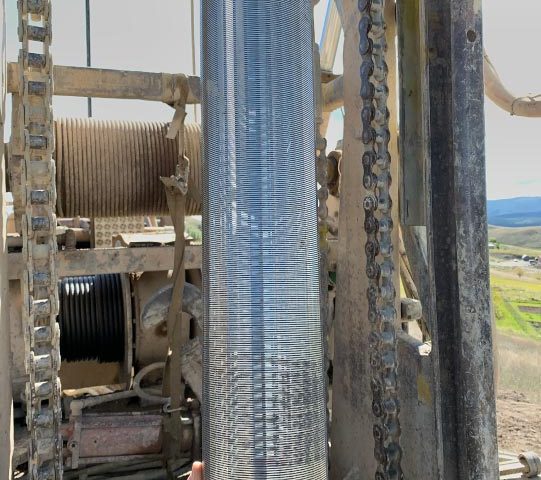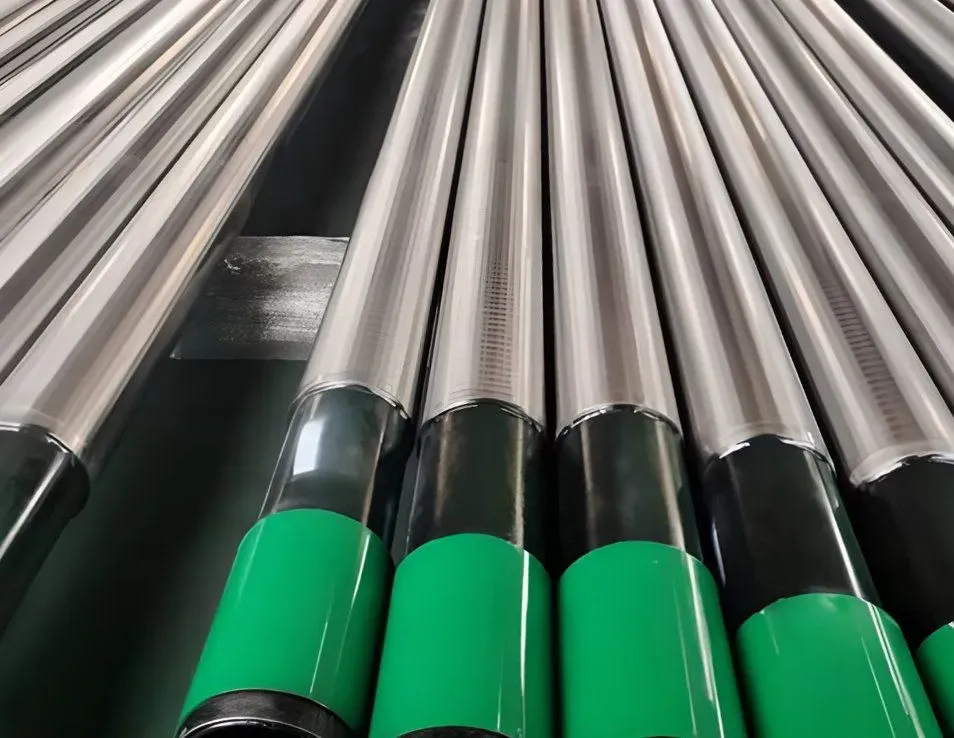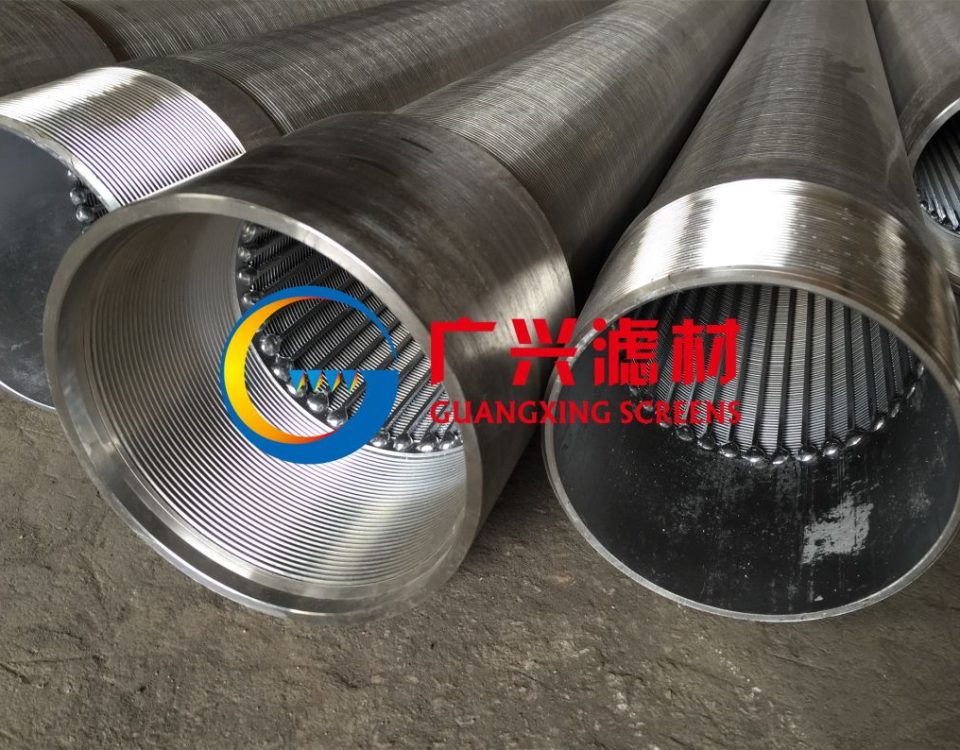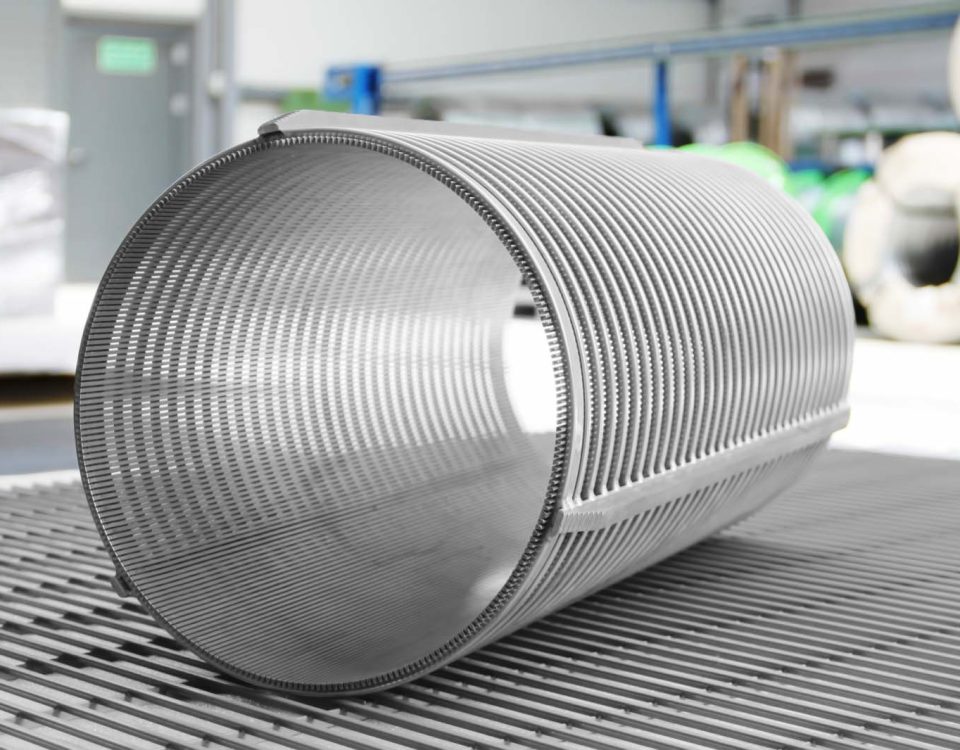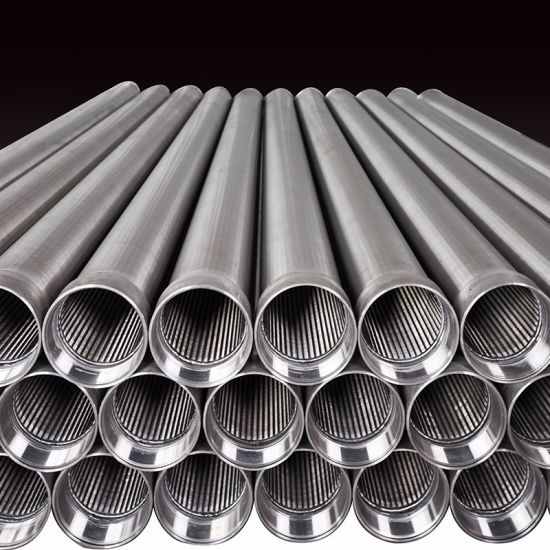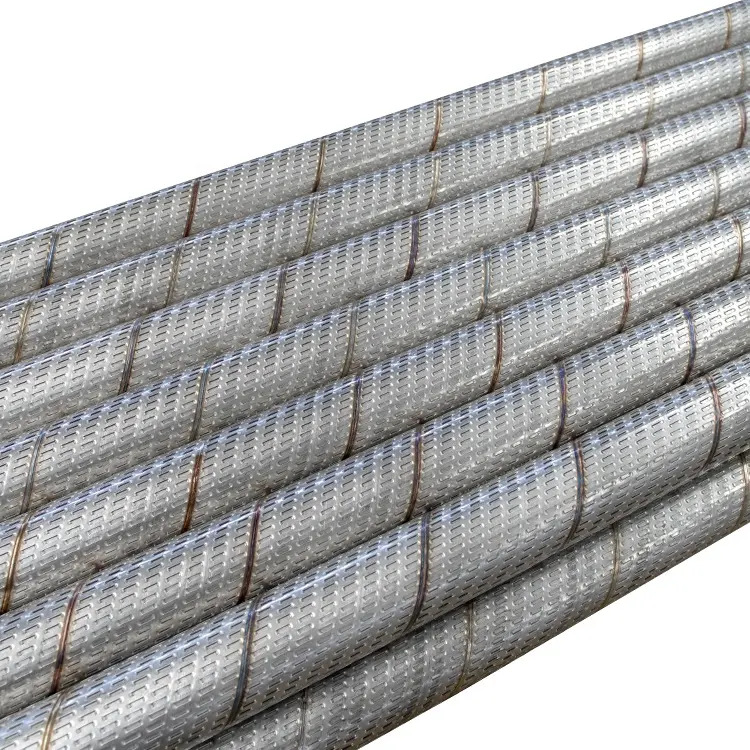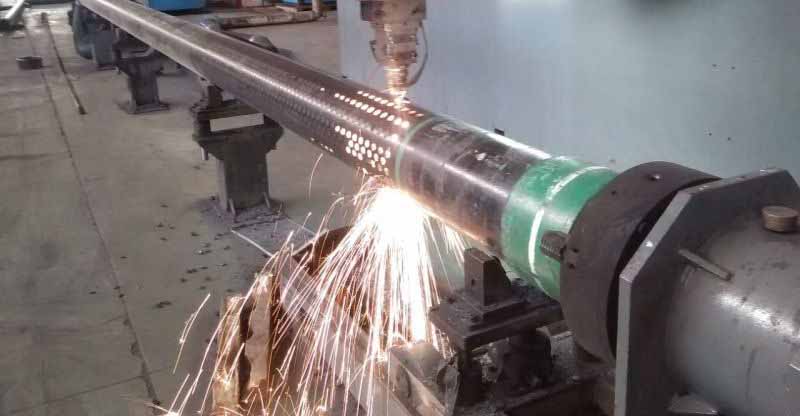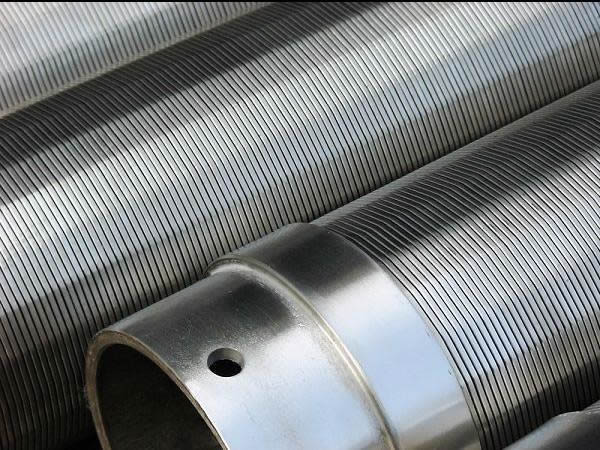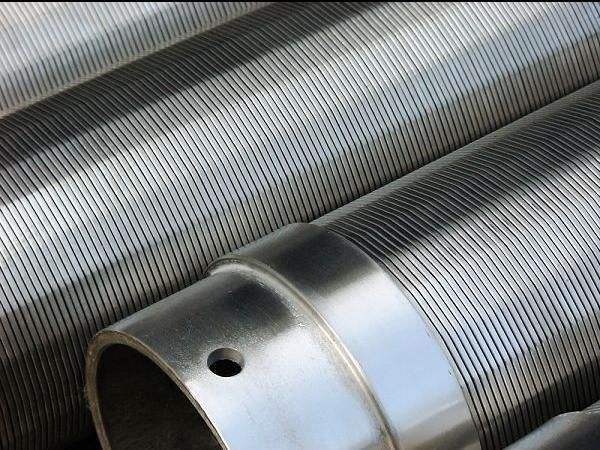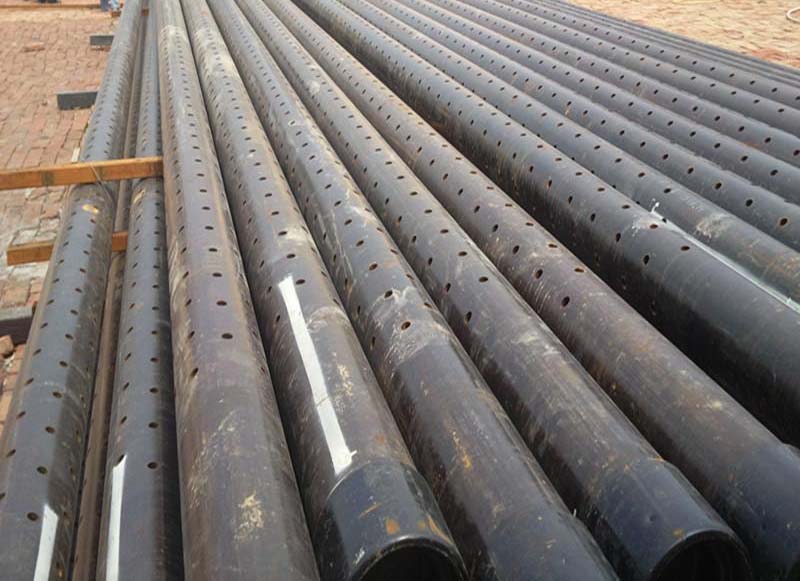Telas de poço de aço inoxidável e carcaças de poços Introdução
Telas de aço inoxidável e carcaças jogam um
papel crucial em várias indústrias, como a água da água perfurando, petróleo e gás
extração, e monitoramento ambiental. Eles são essenciais para filtrar
partículas, areia, e detritos, garantindo a operação eficiente de equipamentos e
a qualidade dos recursos extraídos. Este guia abrangente fornecerá um
compreensão profunda de como as telas e os invólucros de aço inoxidável funcionam, deles
aplicações, processos de fabricação, Seleção de material, e manutenção.
Aço inoxidável: Um material versátil
Aço inoxidável é resistente à corrosão
liga de ferro, cromo, níquel, e outros elementos. Sua resistência à corrosão, mecânico
força, e baixo
Requisitos de manutenção faça dele um material ideal para telas e carcaças
em ambientes desafiadores. Aço inoxidável está disponível em vários graus,
cada um com propriedades diferentes, tornando -o adequado para aplicações específicas.
Graus de aço inoxidável
Existem várias notas de aço inoxidável
usado para telas e carcaças, incluindo a:
- 304/304L: Aço inoxidável de uso geral
aço com boa resistência à corrosão e propriedades mecânicas. - 316/316L: Um mais resistente à corrosão
nota, Adequado para aplicações em ambientes agressivos ou com agressivo
fluidos.
Aços inoxidáveis duplex: Essas notas têm uma microestrutura de fase dupla
de austenita e ferrita, oferecendo maior resistência de força e corrosão
do que aços inoxidáveis convencionais.
A seleção de material depende de fatores como
como a composição química do fluido, temperatura, pressão, e necessário
força.
O papel das telas e carcaças em poço
construção
Telas e carcaças são essenciais
componentes na construção de poços de água, poços de petróleo e gás, e ambiental
Monitorando poços. As telas são normalmente instaladas na zona de produção de
o poço, permitindo que fluidos fluam para o furo do poço enquanto filtram a areia e
outras partículas. Invólucros, por outro lado, são tubos de grande diâmetro que são
inserido no poço para fornecer suporte estrutural e isolar diferente
formações geológicas.
telas
As telas são instaladas em conclusões de poço
Para:
- Filtre a areia, lodo, e outro
partículas - Proteja o furo de poço do colapso
- Minimizar a turbulência e fluxo
restrições - Evitar danos às bombas e outras
equipamento - Garantir a produção eficiente de
água, óleo, ou gás
Existem vários tipos de telas
disponível, como telas envoltas em arame, telas pré-embaladas, e revestimentos com fenda.
A escolha da tela depende de fatores como o tamanho das partículas para serem
filtrado, a taxa de produção do poço, e as características da formação.
Invólucros
Os invólucros desempenham um papel crucial no poço
construção por:
- Fornecendo suporte estrutural para o
poço - Isolando diferente geológico
formações Para evitar a contaminação cruzada - Protegendo o poço do externo
contaminantes e pressão
mudanças - Facilitar a instalação de
Equipamento de produção
Well invólucros podem ser feitos de vários
materiais, incluindo aço carbono, aço inoxidável, e plástico. Aço inoxidável
As carcaças são preferidas em ambientes corrosivos ou quando o poço é exposto a
fluidos agressivos.
Processos de fabricação para aço inoxidável
Telas de aço e carcaças
O processo de fabricação para aço inoxidável
Telas de aço e carcaças envolvem principalmente o corte, formação, e soldagem
operações. Alguns processos de fabricação comuns incluem:
Telas embrulhadas em arame
As telas envoltas em arame são fabricadas por
enrolando um fio contínuo em torno de uma série de apoiar
hastes, formando um slot em forma de V. O fio é normalmente soldado ao suporte
hastes, criando uma estrutura forte e rígida. O tamanho do slot pode ser facilmente
controlado ajustando o espaçamento e a forma do fio.
Telas pré-embaladas
As telas pré-embaladas consistem em um
Tela embrulhada ou com fenda cercada por uma camada de areia ou cascalho, conhecido como
a filtro
pacote. O pacote de filtro é mantido no lugar por uma mortalha externa, que é
normalmente feito de aço inoxidável perfurado. As telas pré-embaladas oferecem melhorado areia
controlar e tempo de instalação reduzido em comparação com as telas convencionais.
Forros com fenda
Os revestimentos com fenda são feitos cortando um
série de slots em um tubo de aço inoxidável. O tamanho e o padrão do slot podem ser
personalizado para atender aos requisitos específicos do projeto. Com fenda
forros são mais baratos que as telas embrulhadas em arame, mas oferecem mais baixas
eficiência de filtração e pode ser mais propenso a conectar.
Well Casings
Casas de poço são normalmente fabricadas
De tubos de aço inoxidável sem costura ou soldados. Os tubos são cortados para o necessário
comprimento e rosqueado ou acoplado para criar uma corda de revestimento contínua. Em alguns
casos, O invólucro pode ser revestido com materiais resistentes à corrosão ou ajustado
com centralizadores para melhorar seu desempenho.
Instalação e manutenção
Instalação e manutenção adequadas de
Telas de aço inoxidável e carcaças são essenciais para garantir a eficiência
operação do poço e minimizar o risco de falha.
Instalação
Durante o processo de instalação, isso é
crucial para:
- Selecione a tela apropriada e
materiais de revestimento com base nas condições do poço - Tamanho e posicionar corretamente o
telas para garantir filtração e produção eficientes - Instale os centralizadores e outros
acessórios conforme necessário para manter a posição e a integridade do invólucro - Garantir manuseio e armazenamento adequados de
os materiais para evitar danos e corrosão
Manutenção
Manutenção regular é essencial para
prolongar a vida das telas e carcaças de aço inoxidável. Atividades de manutenção
pode incluir:
- Inspeções periódicas e monitoramento para
identificar sinais de corrosão, dano, ou desgaste - Limpando e lavando as telas para
Remova detritos acumulados e evite o conecte - Monitorar o desempenho do poço e
Ajustando as taxas de produção para minimizar a produção de areia e impedir a erosão - Implementação corrosão
medidas de controle, como proteção catódica ou tratamentos químicos
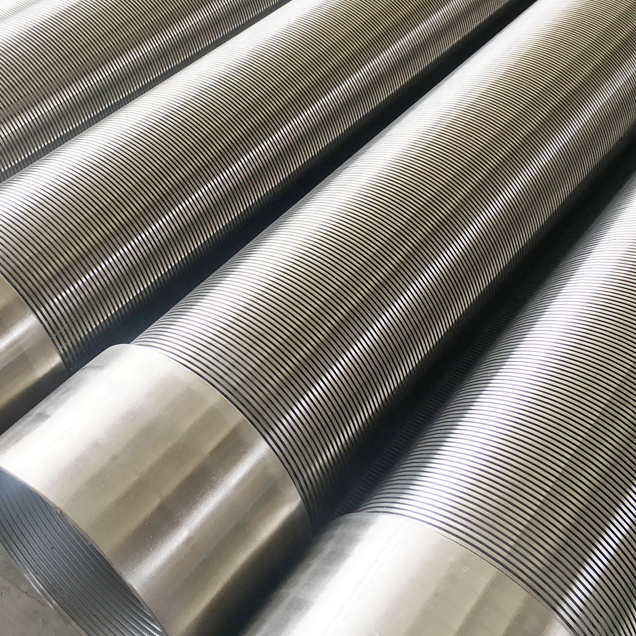
| Tubo de base | Slip On Screen Jacket | |||||||||
| Nominal Diâmetro |
Tubulação de OD (mm) |
Peso lb/ft W. T[mm] |
tamanho do furo Em |
Buracos por pé | Total Área de orifícios in2/ft |
Tela OD (em) |
Área aberta da tela in2/ft SLOT |
|||
| 0.008" | 0.012" | 0.015" | 0.020" | |||||||
| 2-3/8 | 60 | 4.6[4.83] | 3/8 | 96 | 10.60 | 2.86 | 12.68 | 17.96 | 21.56 | 26.95 |
| 2-7/8 | 73 | 6.4[5.51] | 3/8 | 108 | 11.93 | 3.38 | 14.99 | 21.23 | 25.48 | 31.85 |
| 3-1/2 | 88.9 | 9.2[6.45] | 1/2 | 108 | 21.21 | 4.06 | 18.00 | 25.50 | 30.61 | 38.26 |
| 4 | 101.6 | 9.5[5.74] | 1/2 | 120 | 23.56 | 4.55 | 20.18 | 28.58 | 34.30 | 42.88 |
| 4-1/2 | 114.3 | 11.6[6.35] | 1/2 | 144 | 28.27 | 5.08 | 15.63 | 22.53 | 27.35 | 34.82 |
| 5 | 127 | 13[6.43] | 1/2 | 156 | 30.63 | 5.62 | 17.29 | 24.92 | 30.26 | 38.52 |
| 5-1/2 | 139.7 | 15.5[6.99] | 1/2 | 168 | 32.99 | 6.08 | 18.71 | 26.96 | 32.74 | 41.67 |
| 6-5/8 | 168.3 | 24[8.94] | 1/2 | 180 | 35.34 | 7.12 | 21.91 | 31.57 | 38.34 | 48.80 |
| 7 | 177.8 | 23[8.05] | 5/8 | 136 | 42.16 | 7.58 | 23.32 | 33.61 | 40.82 | 51.95 |
| 7-5/8 | 194 | 26.4[8.33] | 5/8 | 148 | 45.88 | 8.20 | 25.23 | 36.36 | 44.16 | 56.20 |
| 8-5/8 | 219 | 32[8.94] | 5/8 | 168 | 51.08 | 9.24 | 28.43 | 40.98 | 49.76 | 63.33 |
| 9-5/8 | 244.5 | 36[8.94] | 5/8 | 188 | 58.28 | 10.18 | 31.32 | 45.15 | 54.82 | 69.77 |
| 10-3/4 | 273 | 45.5[10.16] | 5/8 | 209 | 64.79 | 11.36 | 34.95 | 50.38 | 61.18 | 77.86 |
| 13-3/8 | 339.7 | 54.5[De 9,65] | 5/8 | 260 | 80.60 | 14.04 | 37.80 | 54.93 | 66.87 | 85.17 |
Aplicações de telas de aço inoxidável
e invólucros
Telas de aço inoxidável e carcaças são
usado em várias indústrias, alguns dos quais incluem:
Perfuração de poço de água
Na água de poço de perfuração, aço inoxidável
Telas e cartuchos são usados para filtrar areia e lodo, garantindo limpo e
Água potável segura. Eles também fornecem suporte estrutural ao furo do poço,
impedindo o colapso e a contaminação.
Extração de petróleo e gás
Na indústria de petróleo e gás, inoxidável
Telas e carcaças de aço são vitais para produção eficiente e manutenção
bem integridade. Eles são usados para filtrar areia e outras partículas que podem
danificar o furo de poço, bem como isolar diferentes formações geológicas para
Evite a contaminação cruzada.
Monitoramento ambiental
Telas de aço inoxidável e carcaças são
também usado em poços de monitoramento ambiental para coletar amostras de água subterrânea ou
Gás de solo. A resistência à corrosão e baixa manutenção
requisitos de aço inoxidável o tornam um material ideal para estes
aplicações, onde o desempenho a longo prazo é crítico.
Energia geotérmica
Em Geotérmica
produção de energia, Telas de aço inoxidável e carcaças são usadas para suportar
altas temperaturas e fluidos corrosivos. Eles garantem extração de calor eficiente
e evitar danos ao furo e equipamento.
Vantagens de telas de aço inoxidável e
tripas
Alguns benefícios do uso de aço inoxidável
Telas e carcaças na construção do poço incluem:
- Resistência à corrosão: Inoxidável
As propriedades resistentes à corrosão do Steel o tornam adequado para uso em
ambientes desafiadores, como altas temperaturas, fluidos agressivos, ou
solos corrosivos. - Força mecânica: Aço inoxidável
oferece alta resistência mecânica, melhorando a integridade estrutural do poço
e resistência a forças externas. - Baixa manutenção: A corrosão
Resistência e durabilidade do aço inoxidável Reduzir a manutenção
requisitos, resultando em custos mais baixos a longo prazo. - Costumização: Aço inoxidável
Telas e cartuchos podem ser fabricados em vários graus, tamanhos, e
configurações, permitindo personalização Para
atender aos requisitos específicos do projeto.
Conclusão
Telas de aço inoxidável e carcaças jogam um
papel vital para garantir a operação eficiente e a longevidade dos poços em vários
Indústrias. Sua resistência à corrosão, força mecânica, e baixa manutenção
Os requisitos os tornam um ideal material
escolha para ambientes desafiadores. Ao entender como aço inoxidável
Telas e carcaças funcionam, os processos de fabricação envolvidos, e deles
aplicações, É possível tomar decisões informadas sobre o mais adequado
Materiais e projetos para projetos específicos de construção de poços. Apropriado
As práticas de instalação e manutenção garantirão ainda mais o melhor possível
desempenho e longevidade desses componentes essenciais de poço.

